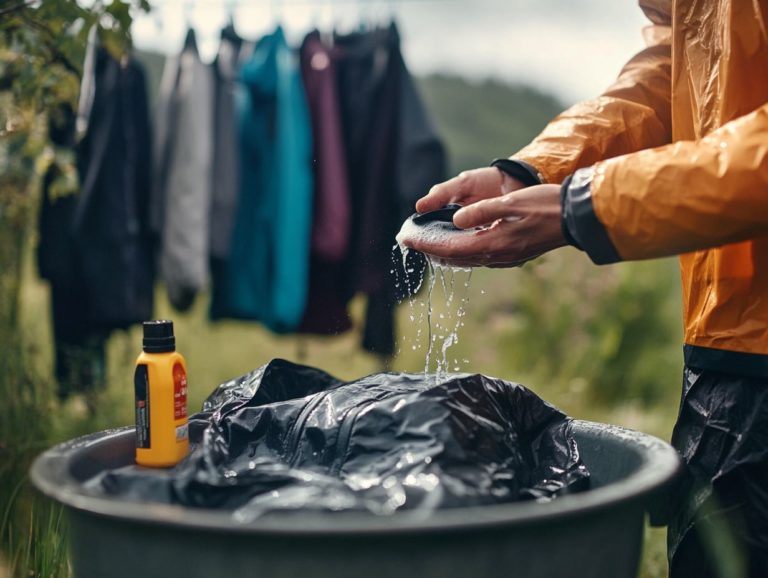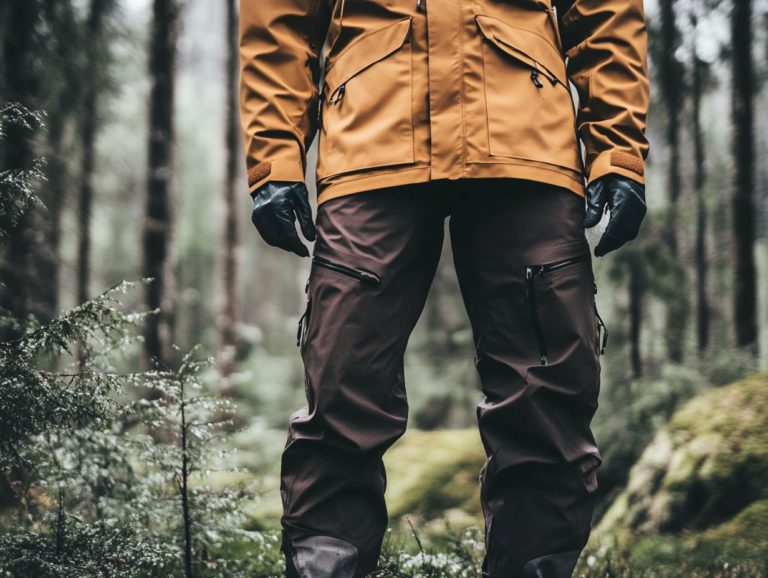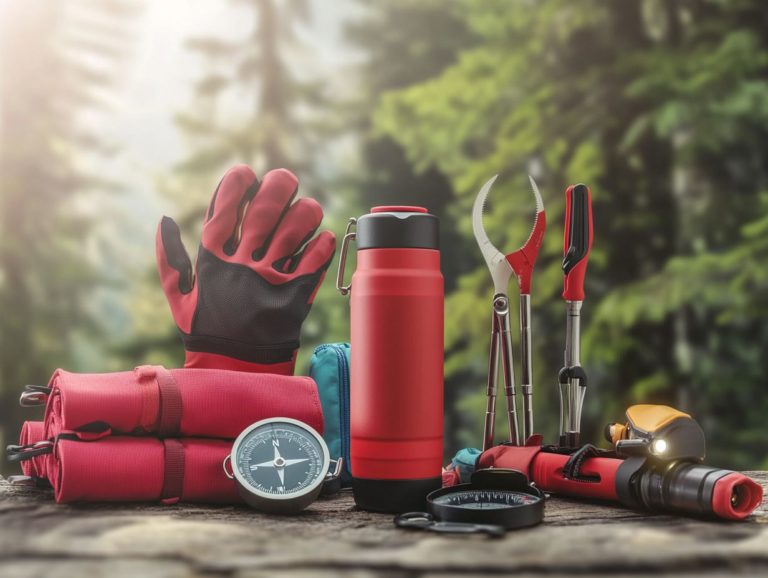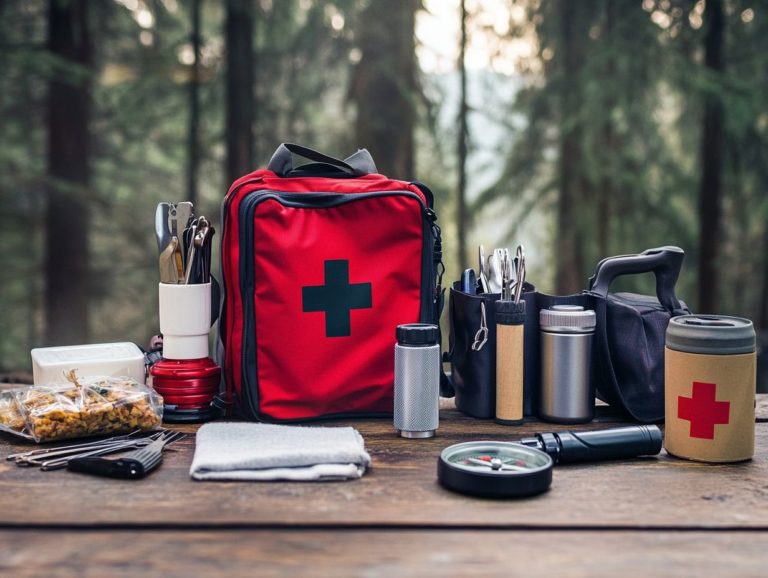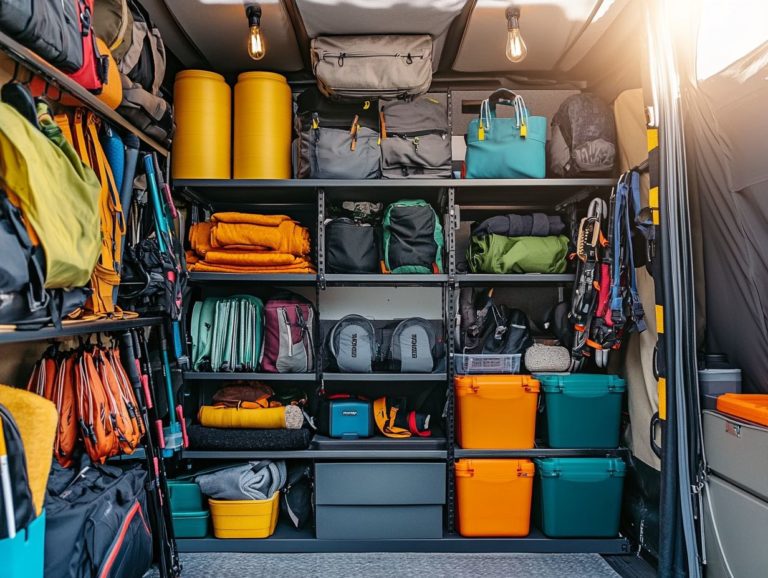What Should You Know About Climbing Gear Maintenance?
Climbing gear serves as your lifeline on the rock face. Its maintenance is essential for your safety and performance during thrilling vertical adventures.
This article delves into key components of climbing gear and their functions. We offer effective cleaning techniques and proper storage tips to keep your climbing equipment in pristine condition.
You will also find guidance on inspecting for wear and tear, determining when to replace gear, and mastering the art of proper handling. With just a bit of attention and care, you can extend the life of your gear and enhance its performance, paving the way for exciting adventures ahead.
Contents
- Key Takeaways:
- Essential Gear for Climbing
- Cleaning and Care for Climbing Gear
- Inspecting and Replacing Gear
- Proper Use and Handling of Gear
- Tips for Prolonging Gear Lifespan
- Frequently Asked Questions
- What should you know about climbing gear maintenance?
- Why is climbing gear maintenance necessary?
- How often should you perform climbing gear maintenance?
- What are some basic steps for climbing gear maintenance?
- What are some common mistakes to avoid when maintaining climbing gear?
- Can I do my own climbing gear maintenance, or should I have a professional do it?
- Frequently Asked Questions
Key Takeaways:
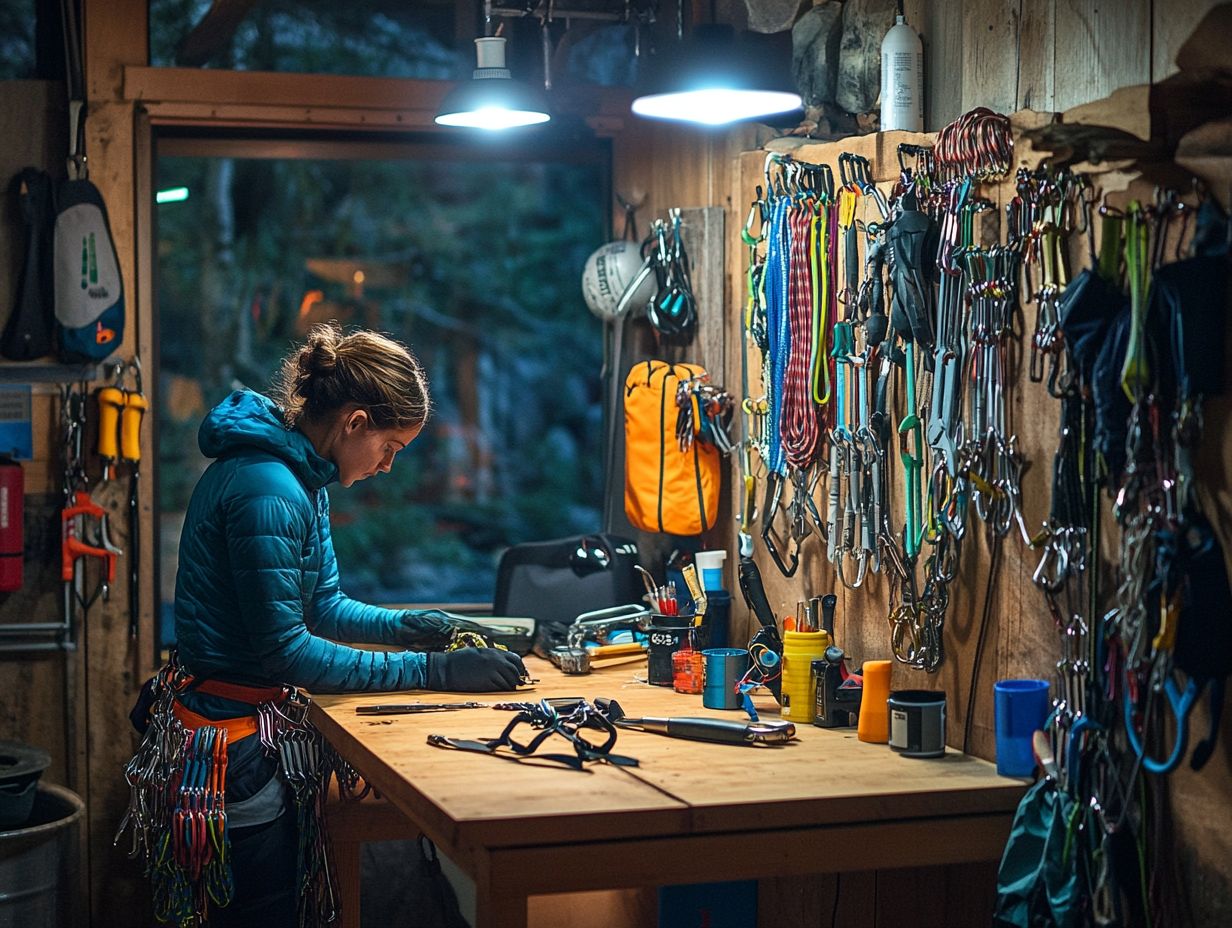
- Proper maintenance of climbing gear is crucial for safety and longevity.
- Regularly clean and store your gear to prevent damage and prolong its lifespan.
- Inspect gear for signs of wear and tear; replace when necessary to ensure safe climbing.
Why is Maintenance Important?
Maintenance is essential for the longevity and reliability of your climbing gear. Every piece of equipment from your climbing harness to your carabiners and quickdraws must perform optimally during your vertical adventures.
Taking the time for proper upkeep can make the difference between a triumphant ascent and a dangerous situation. Each type of gear has its own care requirements. For example, inspect your harness for fraying and wash it regularly to keep grime at bay.
Ropes need careful coiling and storage to prevent kinks and potential damage. Neglecting these straightforward practices could lead to catastrophic failures when you’re scaling new heights.
Ensuring that your belay devices and protective hardware are free from rust and wear greatly enhances their performance. This allows you to focus solely on your climb rather than worrying about your equipment’s reliability.
Essential Gear for Climbing
Choosing the right essential gear for climbing is crucial for your safety and performance. Each piece of equipment plays a pivotal role in your climbing experience.
From harnesses that offer support and security to helmets designed to shield you from falling debris, understanding the function of each type of climbing gear is key.
Essential items like ropes, belay devices, carabiners, and quickdraws are critical for tackling both indoor and outdoor climbing challenges. They ensure your climbing safety.
Opting for high-quality climbing shoes made from advanced synthetic fibers can significantly enhance your grip and comfort on the rock face.
Types of Gear and Their Functions
Understanding the various types of climbing gear and their functions is essential for climbers aiming to elevate their skills and safety.
Each piece of equipment, from the climbing harness that secures you to the belay device that manages the rope, serves a distinct purpose in maintaining safety and ensuring proper techniques during climbs.
Climbing helmets protect you against potential falls and rockfalls, while ropes, carabiners, and quickdraws form the backbone of your climbing system, enabling secure anchoring and fluid movement.
Climbing ropes come in two types: dynamic ropes, which stretch to absorb shock during a fall, and static ropes, which do not stretch. Both are critical for minimizing injury.
Harnesses, made from durable materials like nylon and polyester, fit snugly around your waist and legs, ensuring optimal safety. As you ascend, quickdraws help connect the rope to protection points on the rock.
Carabiners, made from lightweight aluminum or stainless steel, provide secure linking. In sport climbing, using a clip-in system with quickdraws allows for efficient movement.
Traditional climbing gear like nuts and cams offers versatile placements in rock features, ensuring a safe ascent.
Cleaning and Care for Climbing Gear
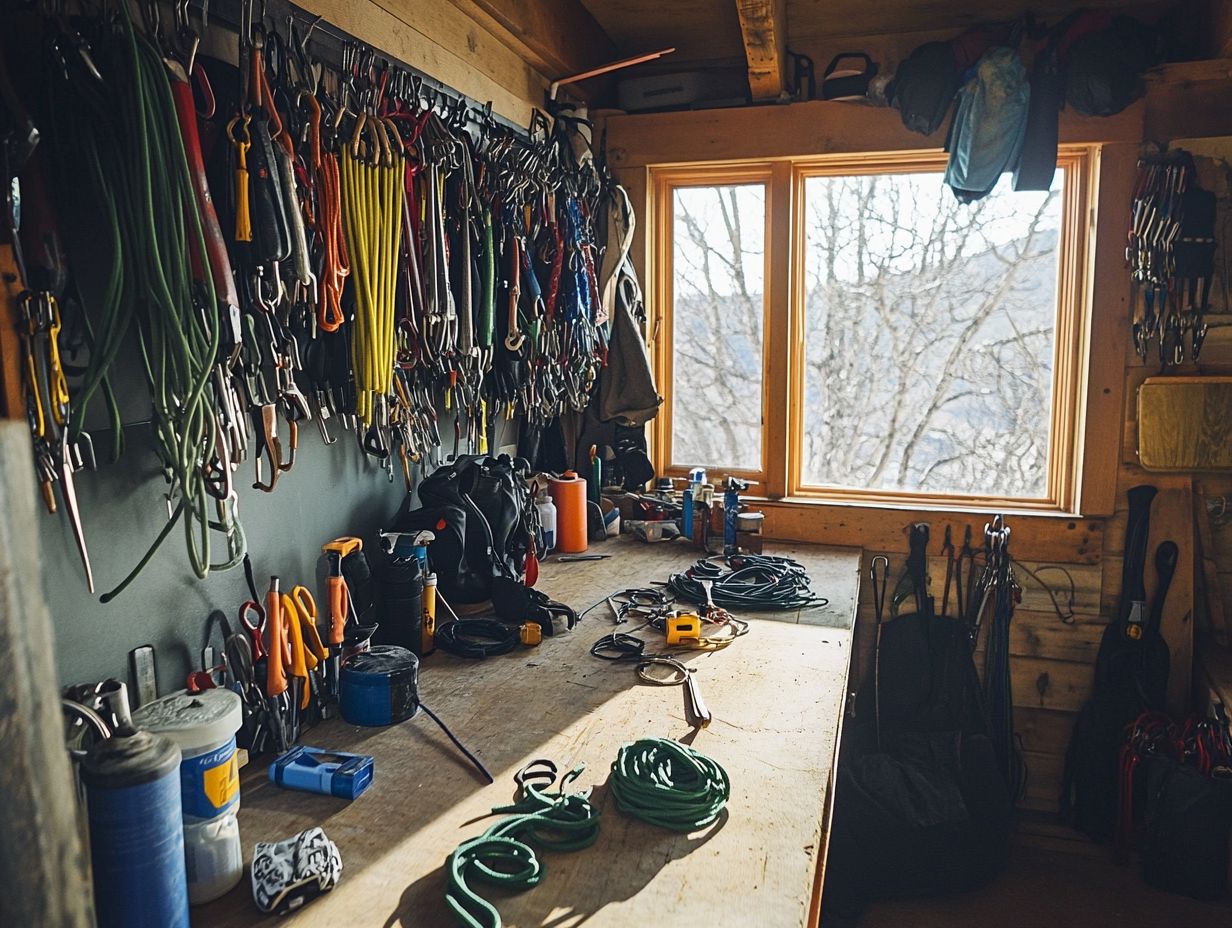
Cleaning and caring for your climbing gear is essential for optimal safety during your climbs. Regular cleaning techniques are not just about aesthetics; they effectively remove dirt and mud that can build up on your climbing shoes and harnesses. They also protect against potential damage from harmful contaminants.
Establishing a consistent storage routine is equally crucial. It shields your gear from UV radiation and other environmental factors that can weaken materials over time. By prioritizing proper care, you ensure that your climbing equipment remains dependable and primed for your next vertical adventure.
Proper Cleaning Techniques
Using proper cleaning techniques is vital for ensuring that your climbing gear, especially climbing shoes and harnesses, remains in peak condition for your next adventure. Regularly cleaning your climbing shoes helps prevent dirt and mud from accumulating, which can compromise grip and performance.
Similarly, your harness and other safety-related equipment should be maintained with gentle cleaning methods that won t damage synthetic materials. This ensures these critical items provide reliable protection during your climbs.
You might often overlook the importance of using specific cleaning products designed for gear maintenance. Harsh detergents can weaken the fabric and diminish functionality. For instance, mixing a gentle soap with warm water is typically ideal for washing harnesses. A soft brush can effectively tackle stubborn dirt on your shoes.
It’s vital to steer clear of machine washing or drying your gear. High temperatures and tumbling can lead to irreversible damage. Neglecting to let your gear air dry properly after cleaning can also foster mold growth, leading to further deterioration.
By implementing these straightforward yet effective techniques, you can significantly extend the life of your equipment while enhancing your safety on every ascent.
Storage Tips
Proper storage of climbing gear is essential for maintaining safety standards during your climbing adventures. You should keep your climbing equipment in a cool, dry place, well out of direct sunlight to minimize exposure to UV radiation. This can weaken materials over time.
Using gear bags specifically designed for climbing equipment helps you stay organized and protects your gear. Make sure your climbing shoes and harnesses are stored in a manner that prevents damage or deformation from accumulating dust and debris.
It’s also crucial to keep items like carabiners and ropes free from contaminants such as dirt and moisture. For instance, ropes should be neatly coiled and stored in a breathable bag to prevent mildew. At the same time, metal gear should be wiped clean and inspected for signs of wear after each use.
Proper packing for transport plays a significant role in safeguarding your climbing gear. Utilizing padded cases can prevent impact damage and avoid tangling. By adhering to these storage practices, you can significantly enhance the durability and safety of your climbing gear.
Inspecting and Replacing Gear
Regularly inspecting and replacing your climbing gear is an essential pillar of climbing safety. This process allows you to spot signs of wear and tear that could jeopardize your well-being on the rock.
Identifying damage be it frayed ropes or worn-out climbing shoes is crucial for deciding when to upgrade your equipment and avert potential mishaps.
As a climber, cultivating a sharp eye for detail is imperative. Conduct thorough inspections of your gear after every outing, ensuring that each component is functioning optimally and securely.
Take a moment to check your gear before your next climb!
Signs of Wear and Tear
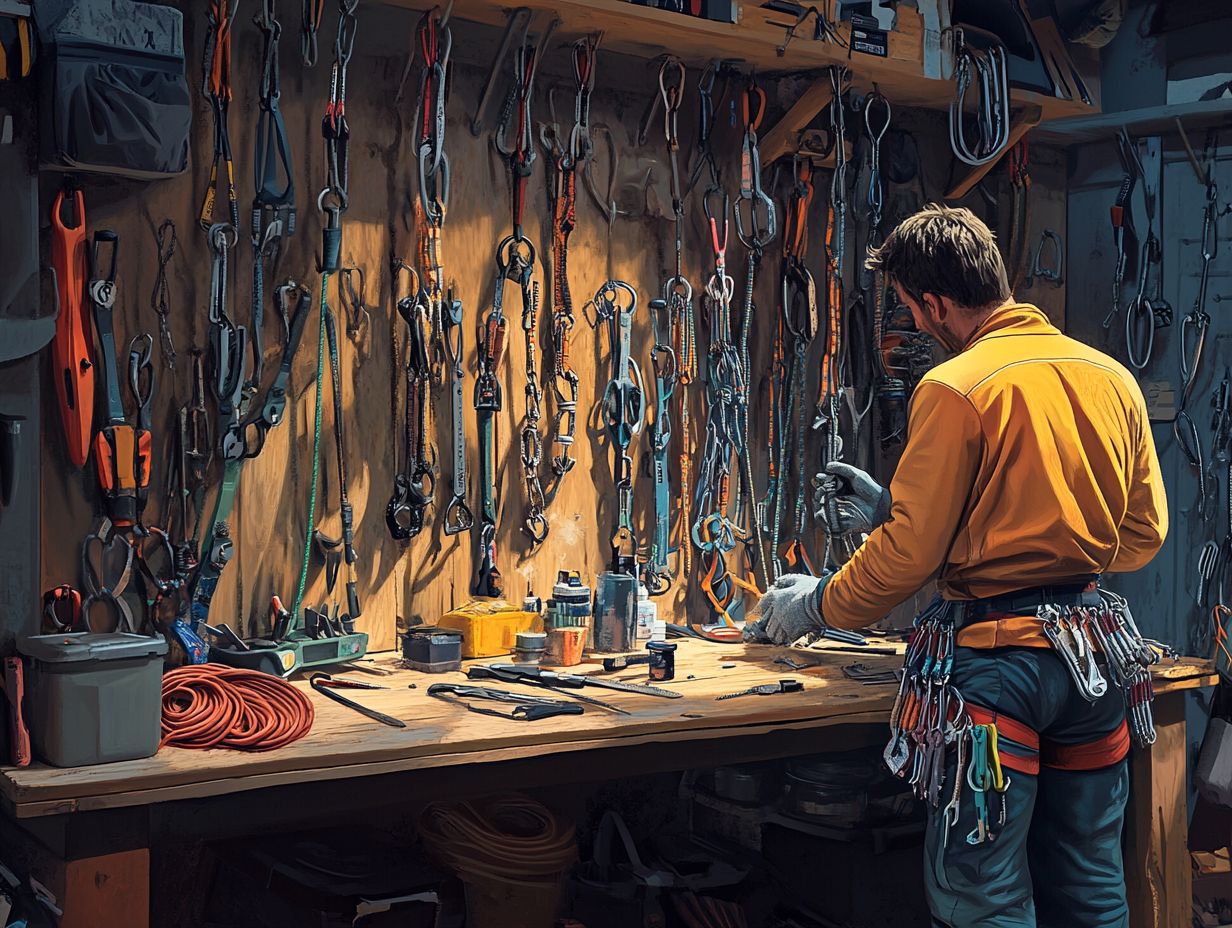
Identifying signs of wear and tear in your climbing gear is essential for maintaining safety and ensuring peak performance.
Look out for common indicators like frayed ropes, cracked carabiners, and worn-out climbing shoes. Each of these issues can significantly impact your safety and effectiveness on the rock face.
Recognizing damage early gives you the chance to take corrective action whether that means replacing a rope or consulting a professional about the health of your climbing harness.
Beyond these visible signs, pay attention to performance cues too. Notice if your shoe soles are losing grip or if your harness straps are unusually flexible. A rope that feels overly stiff or shows signs of discoloration might be a red flag that it has compromised its integrity.
Carabiners that don t close securely or show rust must be replaced immediately!
By staying vigilant and regularly inspecting your equipment, you can not only prevent accidents but also enhance your overall climbing experience! This contributes to a safer climbing community. Understanding what to know about climbing gear weights cultivates a safer climbing environment and extends the lifespan of your equipment, ultimately benefiting both you and your fellow climbers, whether you’re a novice or a seasoned veteran in your adventures.
When to Replace Gear
Knowing when to replace your climbing gear is essential for maintaining your safety on the rock. Equipment that has outlived its usefulness can pose serious risks.
Generally, you should consider replacing ropes after a certain number of falls or if you notice any signs of damage. Climbing shoes? Swap them out when the sole starts to show significant wear.
By regularly evaluating your gear and adhering to optimal care guidelines, you can ensure everything remains reliable and safe for use.
Regarding climbing hardware like carabiners and quickdraws, a thorough inspection for signs of bending or wear is crucial, especially after they ve been subjected to heavy loads.
Manufacturer recommendations serve as invaluable benchmarks for these assessments, often suggesting replacement after several years or a specific number of uses.
To keep your gear in check, create a detailed checklist that includes:
- Examining harnesses for any fraying
- Checking metal components for rust
- Ensuring slings are free of visible cuts
By staying vigilant about your gear’s condition, you empower yourself to effectively manage both safety and performance while climbing.
Proper Use and Handling of Gear
The proper use and handling of climbing gear are crucial for maintaining your safety while scaling heights and ensuring the longevity of your equipment.
By adhering to established climbing techniques, you not only enhance your performance on the rock but also significantly reduce the risk of accidents stemming from misuse.
It s vital to understand how to correctly use essential items like belay devices, carabiners, and ropes. After all, improper handling can lead to wear and tear that happens too soon and ultimately jeopardize the reliability of your climbing gear.
Take the time to master these skills; your safety and success depend on it.
Tips for Prolonging Gear Lifespan
Implementing effective strategies to prolong the lifespan of your climbing gear is crucial for both your safety and performance on the rock. Simple practices, such as conducting regular inspections, using proper cleaning techniques, and ensuring appropriate storage, can significantly enhance the longevity of your equipment.
Familiarizing yourself with climbing techniques that minimize stress on your gear helps keep it intact during countless vertical adventures. Routine inspections should become part of your climbing ritual, checking for signs of wear and tear, like frayed ropes or damaged carabiners.
After each climbing session, make it a habit to clean your gear with mild soap and water to prevent dirt and grit from causing long-term damage. Use a dedicated gear bag to keep your equipment organized and shielded from environmental hazards when it’s not in use.
Using safe ways to keep your climbing partner safe reduces stress on your gear, leading to safer climbs. Make these easy tips part of your climbing routine to boost your adventure!
Frequently Asked Questions
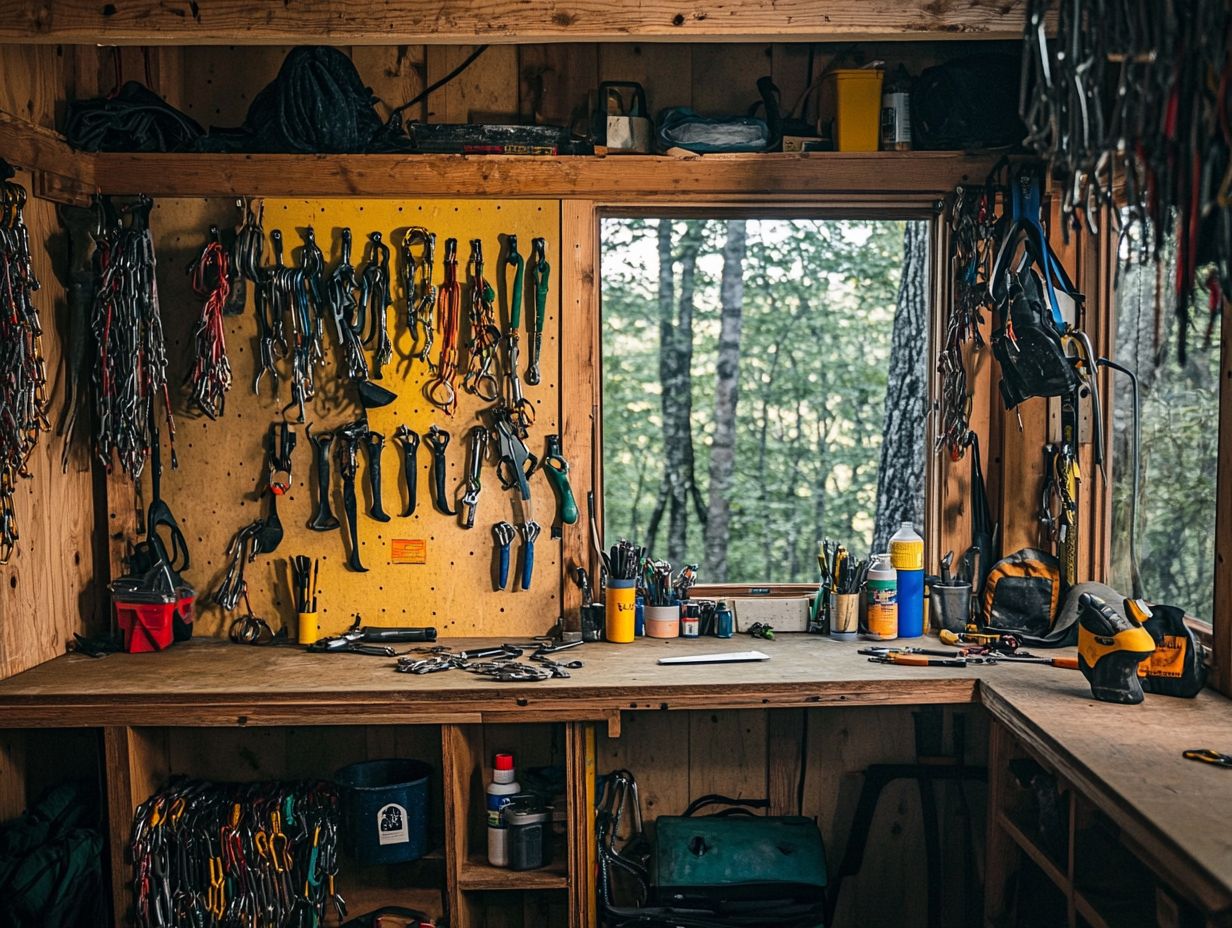
What should you know about climbing gear maintenance?
Climbing gear maintenance is essential for ensuring your safety while climbing. It involves regularly checking and cleaning your gear to keep it in good working condition.
Why is climbing gear maintenance necessary?
Climbing gear maintenance is necessary to prevent equipment failures and accidents. Regular maintenance helps identify any potential issues with your gear, ensuring it is safe to use.
How often should you perform climbing gear maintenance?
It is recommended to perform climbing gear maintenance before and after each use, as well as periodically throughout the year, especially for gear that sees frequent use.
What are some basic steps for climbing gear maintenance?
Basic steps for climbing gear maintenance include inspecting gear for wear and tear, cleaning and lubricating moving parts, and storing gear properly in a dry, cool place.
What are some common mistakes to avoid when maintaining climbing gear?
Common mistakes to avoid when maintaining climbing gear include not following manufacturer’s instructions, using improper cleaning products, and not storing gear correctly after use.
Can I do my own climbing gear maintenance, or should I have a professional do it?
It is recommended to have a professional inspect and service your gear at least once a year. However, you can perform basic maintenance on your own as long as you closely follow the manufacturer’s instructions.
Start inspecting your gear today for a safer climbing experience!

